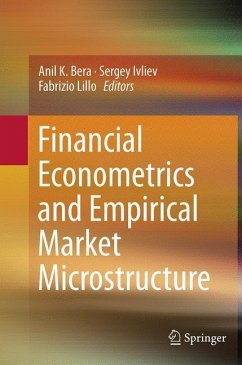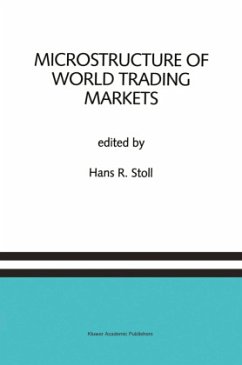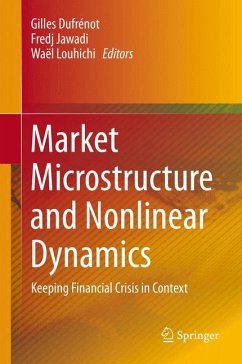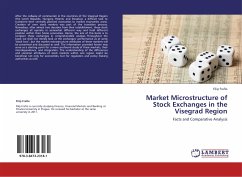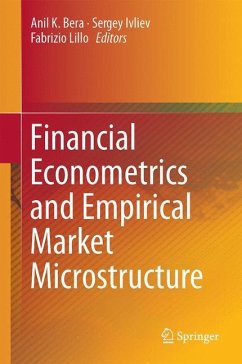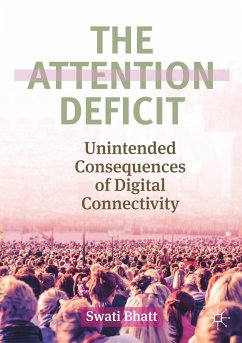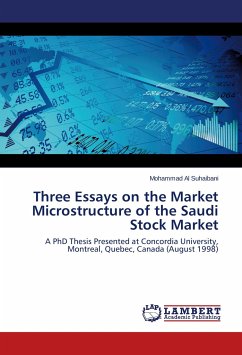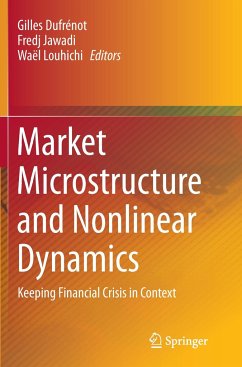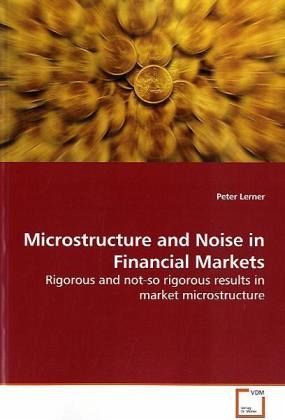
Microstructure and Noise in Financial Markets
Rigorous and not-so rigorous results in market microstructure
Versandkostenfrei!
Versandfertig in 6-10 Tagen
52,99 €
inkl. MwSt.

PAYBACK Punkte
26 °P sammeln!
Market microstructure is a discipline studying thefeatures of the financial markets, which are the result of deliberate design as well as economic laws and technological infrastructure. It has recently increased in importance because of the propagation of programmatic trading and the proliferation of ever more sophisticated financial fraud. My book deals with the subject of microstructure of financial markets not as a collection of miscellaneous results but as a connection between few underlying ideas. These ideas concern the formation of the bid-ask spread as a result of information asymmetry...
Market microstructure is a discipline studying the
features of the financial markets, which are the
result of deliberate design as well as economic laws
and technological infrastructure. It has recently
increased in importance because of the propagation
of programmatic trading and the proliferation of
ever more sophisticated financial fraud. My book
deals with the subject of microstructure of
financial markets not as a collection of
miscellaneous results but as a connection between
few underlying ideas. These ideas concern the
formation of the bid-ask spread as a result of
information asymmetry, order processing and
inventory maintenance and consequent bid-ask bounce,
the influence of frictions on volatility and the
relationship between natural (continuous) and
transaction (discrete) time. Empirical examples
involve event studies of the developed (NYSE,
Nasdaq) as well as emerging markets such as Russian
sovereign bond market in the late 90s and Venezuelan
short-term debt.
features of the financial markets, which are the
result of deliberate design as well as economic laws
and technological infrastructure. It has recently
increased in importance because of the propagation
of programmatic trading and the proliferation of
ever more sophisticated financial fraud. My book
deals with the subject of microstructure of
financial markets not as a collection of
miscellaneous results but as a connection between
few underlying ideas. These ideas concern the
formation of the bid-ask spread as a result of
information asymmetry, order processing and
inventory maintenance and consequent bid-ask bounce,
the influence of frictions on volatility and the
relationship between natural (continuous) and
transaction (discrete) time. Empirical examples
involve event studies of the developed (NYSE,
Nasdaq) as well as emerging markets such as Russian
sovereign bond market in the late 90s and Venezuelan
short-term debt.



